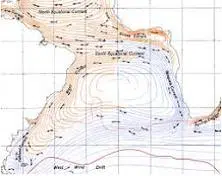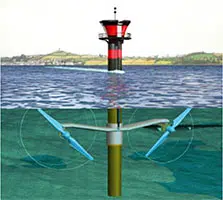 A current is something that runs or flows . The marine , for its part, is linked to the sea : a mass of salt water. The idea of marine current, in this way, refers to the surface movement of sea water .
A current is something that runs or flows . The marine , for its part, is linked to the sea : a mass of salt water. The idea of marine current, in this way, refers to the surface movement of sea water .
Ocean currents have various causes. The action of the wind , the rotation movement made by planet Earth and the characteristics of the coasts are some of the reasons that generate the existence of marine currents.
It is important to highlight that marine currents involve not only horizontal movements of water , but also vertical ones . Several decades ago, researchers discovered that the planet's marine currents are structured in three dimensions:
* On the one hand, on the surface there are horizontal movements that mainly involve the inertia generated by the rotation of the Earth and the wind;
* vertical movements, for their part, alter the effects of the Earth's rotation due to the configuration of the coasts and the underwater relief, so that a centrifugal force is produced that tends to concentrate, so to speak, the ocean level over the entire circumference of the equator.
We must clarify that what is known as centrifugal force , in accordance with what is established by Newtonian and classical mechanics, is a fictitious force that occurs in the description of the movement carried out by a body in a reference system that is rotating. It is also possible to define this concept as the apparent force that an observer notices in which Newton's laws of motion do not apply, which is also found in a rotating reference system.
On the other hand, different types of currents can be differentiated according to their characteristics. Cold marine currents , as their name suggests, involve the movement of waters that are at low temperatures. They are due to the rotation of the Earth and develop from east to west due to the rise of cold water that comes from very deep areas. The Humboldt Current , which is also known as the Peru Current , is an example of a cold current. The German Alexander von Humboldt was the one who described this marine current for the first time.
Warm marine currents , on the other hand, originate in the intertropical region, arising on the eastern coasts and advancing in the opposite direction to the planet 's rotation. The Gulf Stream , originating in the Gulf of Mexico , is a warm current.
 Ocean currents , on the other hand, register a constant movement because they are due to the Earth's rotation, unlike wave currents (related to the wind) and tidal currents (linked to the attraction exerted by the moon ), among others. whose movements vary.
Ocean currents , on the other hand, register a constant movement because they are due to the Earth's rotation, unlike wave currents (related to the wind) and tidal currents (linked to the attraction exerted by the moon ), among others. whose movements vary.
One of the uses that humans have found in marine currents is the extraction of energy , especially in the deepest areas, and for this purpose they have been developing specific devices for a long time. It is necessary to clarify that this process involves a very high economic investment , which includes the manufacturing of the machinery, its installation and the inevitable maintenance tasks.
To counteract these costs, the Polytechnic University of Madrid presented a series of designs and procedures at the beginning of 2018 that promise considerable savings. In addition to Spain, another country that is working on obtaining energy from ocean currents is Canada, where there are already several experimental parks with first-generation devices, which are placed on the seabed .
Some experts point out that around 80% of this energy is found beyond 40 meters of depth , and that is why the production of extraction devices is so expensive.
